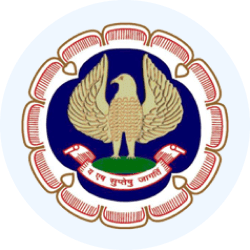Integral and Non-integral system | Cost and Management Accounting for CA Intermediate PDF Download
Integral System
An integral or integrated system is a method of accounting where only one set of account books is maintained to record both cost and financial transactions. This system merges cost and financial accounts into one comprehensive set of books. According to CIMA, London, an integral system is one where financial and cost accounts are interlocked to ensure that all relevant expenditure is absorbed into the cost accounts.
Advantages of the Integral System
- No Reconciliation Needed: Since there is only one set of books, there is only one figure for profit or loss, eliminating the need for reconciliation.
- Economical: This system avoids the duplication of recording transactions in two separate sets of books.
- Readily Available Information: Accounting information is easily accessible and automatically checked for accuracy.
- Facilitates Mechanized Accounting: The system supports the introduction of mechanized accounting processes.
- Improved Understanding Among Staff: A single system promotes better understanding among staff.
Basic Features of the Integral System
- No Cost Ledger Required: All control accounts are maintained in the financial ledger.
- No Need for a Cost Ledger Control Account: Both debit and credit aspects of all transactions are recorded in respective accounts.
- Maintenance of Subsidiary Ledgers: Stores Ledger, Work-in-Progress Ledger, and Finished Goods Ledger are maintained as in non-integrated accounting. Additionally, Sales Ledger and Purchase Ledger are maintained.
- Overhead Ledger: Separate accounts for factory, administration, and selling and distribution overheads are maintained.
- Control Accounts in General Ledger: Control accounts for each subsidiary ledger are maintained.
- Overhead Balances: Balances of Overheads Control Accounts represent under or over-absorption of overheads, transferred to the Profit and Loss Account.
- Profit or Loss Transfer: Profit or loss as per the Profit and Loss Account is transferred to the Profit and Loss Appropriation Account.
- Degree of Integration: The extent of integration must be determined in advance.
- Suitable Coding System: A coding system is developed to serve both cost and financial accounts.
- Agreed Accounting Procedure: Procedures for accruals, prepaid expenses, and adjustments necessary for preparing interim accounts must be agreed upon.
Essential Prerequisites for Integrated Accounting System
- Degree of Integration: The management must decide on the level of integration (full or partial).
- Suitable Coding System: A coding system must be developed for both financial and cost accounts.
- Accounting Policy: An agreed routine for accruals, prepaid expenses, and other adjustments.
- Coordination: Efficient coordination between the staff responsible for financial and cost aspects of accounts is essential.
Practical Problems Relating to Integrated Accounting System:
Journal entries for transactions under integrated accounting include:
- Materials purchased on credit
- Payment to creditors
- Issue of direct materials for production
- Payment of wages
- Charging wages for production
Non-Integral System
A non-integral system is a method of accounting where two separate sets of account books are maintained: one for cost accounts and the other for financial accounts. Cost accounts are maintained separately from financial accounts. According to CIMA, London, a non-integral system is one where cost accounts are distinct from financial accounts, with the two sets of accounts being kept in agreement using control accounts or other means of reconciliation.
Basic Features of Non-Integral System
- Separate Ledgers: Separate ledgers are maintained for cost and financial accounts.
- Double Entry System: It is based on the double entry system like financial accounting.
- No Personal Accounts: Cost accounts do not show relationships with outsiders.
- Impersonal Accounts: Cost accounts are concerned with real and nominal accounts.
- Stocks in Real Accounts: Only stocks are shown in cost accounts.
- Detailed Nominal Accounts: Transactions affecting nominal accounts are recorded in detail.
- Main and Subsidiary Ledgers: One main ledger (Cost Ledger) and various subsidiary ledgers are maintained.
- Reconciliation Needed: Reconciliation of costing profit or loss with financial accounts is essential.
Ledgers under Non-Integral Accounts
Principal Financial Ledgers:
- General Ledger: Contains all real, nominal, and personal accounts except trade debtors and creditors.
- Debtors Ledger: Contains personal accounts of trade debtors.
- Creditors Ledger: Contains personal accounts of trade creditors.
Principal Cost Ledgers:
- Cost Ledger: The principal ledger controlling all other ledgers in the costing department.
- Stores Ledger: A subsidiary ledger containing all stores accounts.
- Work-in-Progress Ledger: A subsidiary ledger with separate accounts for each job in progress.
- Finished Goods Ledger: A subsidiary ledger containing accounts of completely finished goods and jobs.
Differences Non-Integral Systems
- Maintains two separate sets of account books: one for cost transactions and another for financial transactions.
- Uses a Cost Ledger.
- Opens Control Accounts in the Cost Ledger.
- Produces two figures for profit or loss: one from the cost accounts and another from the financial accounts.
- Requires reconciliation of cost and financial accounts due to the two separate figures for profit or loss.
- Transfers balances of Overheads Control Accounts, representing under or over absorption of overheads, to the costing Profit & Loss Account.
- Involves duplication of transaction recording in two sets of account books, demanding more manpower, time, and money.
Difference Integral System
- Maintains only one set of account books for both cost and financial transactions.
- Does not use a Cost Ledger.
- Opens Control Accounts in the General Ledger.
- Produces only one figure for profit or loss, as there is only one set of account books.
- Does not require reconciliation of accounts since there is only one figure for profit or loss.
- Transfers balances of Overhead Control Accounts, representing under or over absorption of overheads, to the Profit and Loss Account.
- Is economical, avoiding the duplication of transaction recording in two sets of account books.
|
24 videos|60 docs|17 tests
|




















